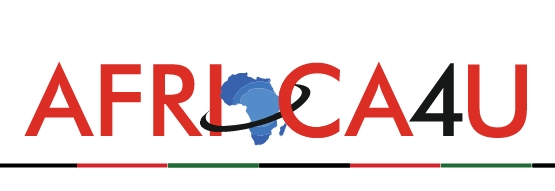(4 Minutes Read)
The rest of the world was moving away from regional integration, the African states decided to flock together to take charge of their destiny and collectively address the economic backwardness that had ruined the continent since the colonial days.
The African Continental Free Trade Area (AfCFTA) is a dream project of AU, regarded as an elixir for the continent’s economic, social, and political woes. The rationale is to create a single market of 1.4 bn people for goods and services, facilitate free movement of people and capital, and promote industrial development and economic integration to attract international business. While the rest of the world was moving away from regional integration, the African states decided to flock together to take charge of their destiny and collectively address the economic backwardness that had ruined the continent since the colonial days.
Signed in 2018, AfCFTA entered its operational phase in mid-2019. Though COVID-19 slowed its pace, it started gaining momentum and moved into the implementation stage in January 2021. The highest priority was given to promoting Intra-regional trade which has remained dismally low, at around 15% of total African trade, compared to 60% in Asia and 70% in Europe. Experts regard intra-African trade as a potent tool to enhance the resilience of the continent by insulating it from global volatility and negative shocks.
The Guided Trade Initiative (GTI) commenced on October 22 in a trial run, involving seven countries. The outcome demonstrated that products could be traded across Africa using AfCFTA documents and procedures. However, it also exposed several hitches. These included a lack of familiarization with the precise tariff schedules among customs officials, long duration for consignments to reach their destinations, and steep freight and transportation charges. The process of gradual tariff elimination under AfCFTA is expected to be completed by 2034. However, the Non-tariff Barriers (NTB) are considered as bigger impediments than tariffs for the development of intra-African trade.
Nevertheless, these are understandable snags. Regional Agreements of this magnitude, involving 54 countries cannot be created overnight. The European Union took 11 years to establish its customs union, and another 25 years to emerge as a “single market”.
Despite these constraints, the commendable groundwork for building legislative architecture must be appreciated. Under Phase 1, negotiations on goods and services and the dispute settlement mechanism have been completed, along with the setting up of oversight committees and the adoption of work programmes. Out of the Fifty-four Member States that have signed the Agreement, 47 have ratified it as of August 2024. A significant amount of work on tariff reduction schedules, services schedules, and Rules of origin has been agreed upon. Protocols on investment, intellectual property, and competition are also mostly in place.
Yet, even at the close of 2024, the intra-African trade data does not reflect any upsurge in the amount of goods being traded under the new AfCFTA rules. This has led to significant frustration.
Hence the recent extraordinary session of African Ministers of Trade, Industry, and Mining, organized by the African Union Commission, in Addis Ababa, which took stock of the progress of AfCFTA is symbolic.
Regional integration is a major milestone in the journey toward, AfCTA. The ministers reviewed the varying levels of regional economic integration across Africa’s economic communities and trade blocs. The meeting underlined the need to integrate all African nations into the agreement before deepening the economic integration. The importance of balanced regional integration to ensure the full and inclusive implementation of the AfCFTA was highlighted. A consensus was reached to organize a conference to evaluate the readiness of African countries to negotiate new frameworks, such as a common African market or customs union.
According to reports, in 2022, 46 African economies were dependent on the export of primary commodities, leading to lower levels of development, economic instability, and fiscal unpredictability. The Ministers underscored the importance of enhancing industrial production and increasing added value in African trade chains. The meeting also upheld the sustainable use of African mineral resources and promoted local manufacturing to attain optimal utilization of natural resources. The session also adopted Africa’s Green Minerals Strategy, a new push to achieve a fair and sustainable transition to a low-carbon economy.
The good news is that, apart from assessing the implementation status of AfCFTA, the Ministerial meeting explored the possibility of expediting regional integration. Of course, the recommendations will materialize only after the approval of the African Union, and later adoption by the African heads of state and government at the next summit of the Union in February 2025. But it flags off a new phase in Africa’s journey toward AfCFTA and signals the robust determination of the African countries to work together and advance integration.





